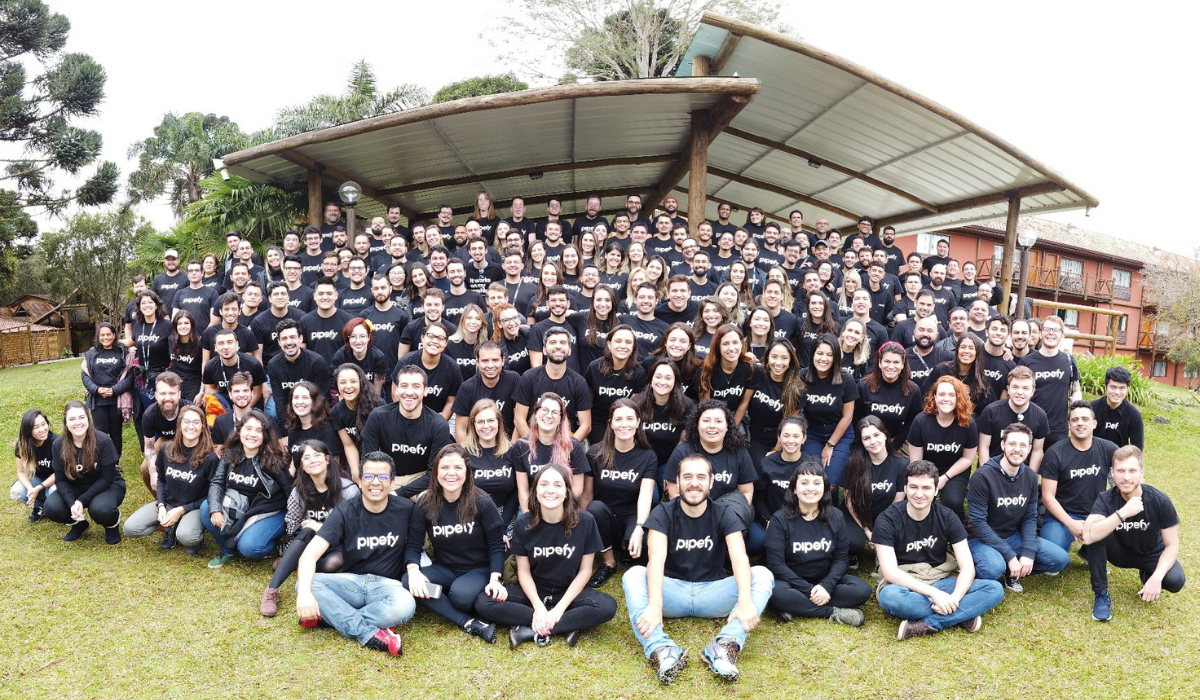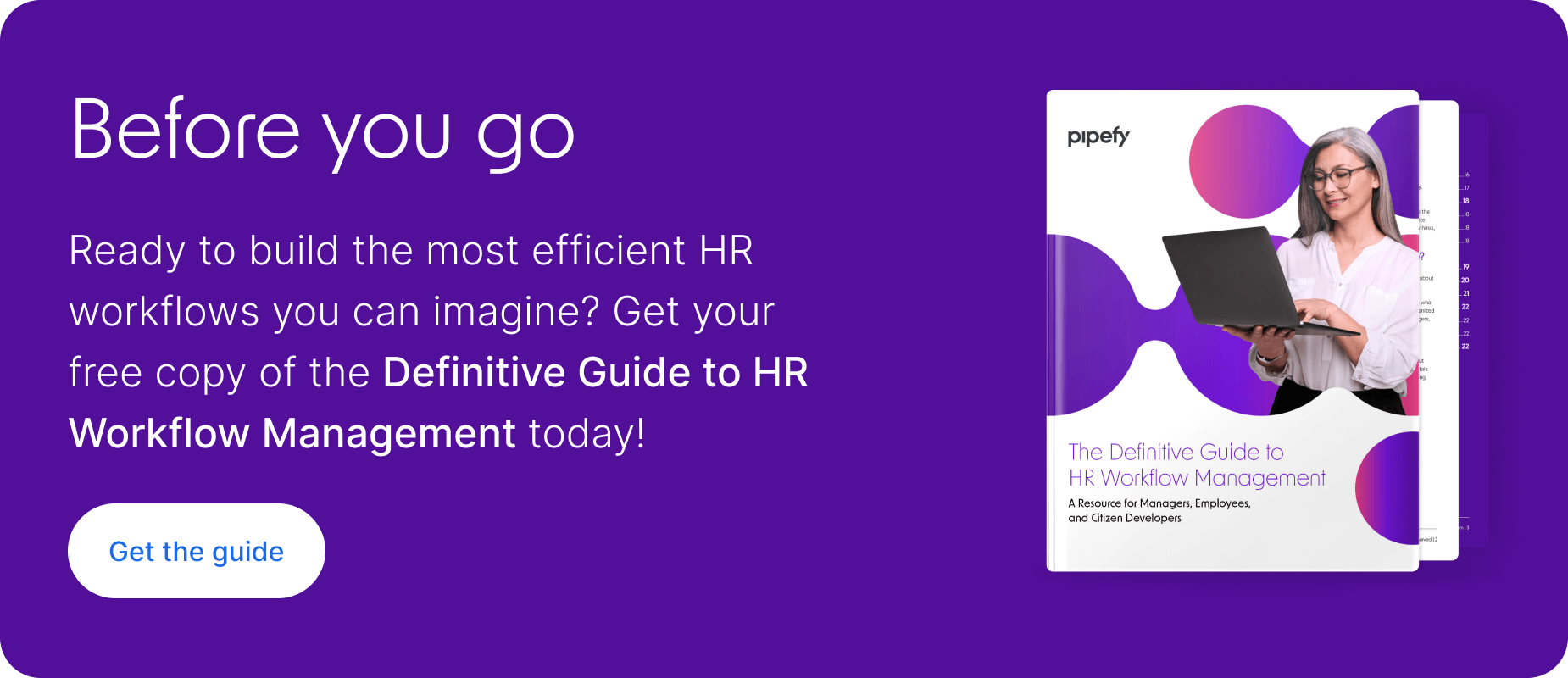ARTICLE SUMMARY
Companies are made of people. And what drives your company through the next challenges are not your product, revenue or even the brand you’ve already created. These points can help, of course. However, employees are the ones who help a company grow.

Companies are made of people. And what drives your company through the next challenges is not your product, revenue, or even the brand you’ve already created. These points can help, of course. However, employees are the ones who help a company grow.
Here at Pipefy, we care about our culture and its benefits. Anyone can copy your product, features, or even your brand. But nobody can copy the way you accept challenges and solve problems. That’s what Culture truly means.
So, I’ll ask you two questions. Will the next person you hire only be there to solve a temporary problem without growth opportunities or will they become the top talent that will drive your company forward?
You’re probably after the person who will accept more challenges, learn humbly, and grow with the company, right? So here comes the second question: what are you and your company doing to attract and motivate these profiles of people?
Strategic thinking during the recruitment process is the key to achieve the results you are hoping for. So let’s take a look at the main points you should consider while recruiting a new employee and its benefits.
Recruitment Process as a Strategy
We already talked about what a recruitment process is. So hiring the right profile of employees has many benefits, as we discussed. However, to achieve it, you have to build a strategy that begins much before the recruitment step. The interview process is the last step. Choosing the best people after they move through the selective process is much easier when you have already attracted qualified candidates, right?
So what should you do to find the top candidates in the market? Well, this is not an easy question, but following Lean methodology, let’s put ourselves in the applicant’s shoes.
Why would a top talent apply for a job in your company? Is it all about salary and benefits? Or maybe the possibility of progress and growth within the company? Or maybe a combination of both?
The first tip is to create a strong organizational culture—as I already mentioned. And not the kind of Culture where only the Human Resources department cares about maintaining it. It has to be a priority and followed by everyone within the company.
With that in mind, it’s much easier to understand what kind of qualities and attitudes of your new employees must-have. And knowing your target, you can understand how to attract them. Creating and developing an influential culture and values is the first step of the hiring process.
But showing this strong Culture to the world is not that easy, right? That’s why I brought two techniques that will help you to align your Culture to your recruitment process: recruitment marketing and employer branding.
Let’s check out how you can apply these techniques.
Recruitment Marketing
Recruitment marketing is a new concept in the human resources world that can be defined as viewing your candidates as customers of your business. The idea is to use marketing strategies to attract, engage, and nurture potential applicants to your job positions so that it’s possible to create a kind of marketing funnel aligned to your recruitment strategy.
Your organizational culture will drive your recruitment marketing strategy to target the right audience and build a whole experience to make your positions much more attractive than others in the market.
Some examples of how to apply recruitment marketing:
-
- Map what channels are better to reach the audience you are targeting. Are they using Instagram, LinkedIn, or your blogs to search for jobs?
-
- Use the right tone of voice in a job posting. Do you have a formal or informal culture? Format your posting in a way that aligns with your company’s culture so you attract the right kind of candidates.
-
- Offer benefits and job conditions that make your audience more interested. What would your audience like to have in terms of benefits? What are some organizational culture values that you could leverage as benefits?
Employer Branding
Employer branding is the reputation and the market’s perception of your company as an employer. Basically, it’s like usual branding, but from the perspective of an employee.
Another concept that’s essential to create a good strategy is the Employee Value Proposition (EVP). It can be defined as the sum of your brand’s culture, values, and mission. Basically, what the company trusts and provides to the employees, society, and other stakeholders.
It’s good to mention that an employee chooses a brand to work for, not a company. It means when a person sees a job opportunity for your company, they will consider everything they heard and saw about it. And, of course, they will always choose a brand known as a great place to work.
Here at Pipefy, we’re not only creating but always sharing the good experiences we provide to our employees. It’s essential to build a strategy to publish this kind of Culture content—it’s a part of Recruitment Marketing, too. Many times a company provides good actions, but it doesn’t leverage it enough to impact the brand.
Most of Pipefy’s Instagram account posts are driven by company culture. Another strategy we use is to publish employees’ stories on our blog and LinkedIn profile. One of our values is Diversity, so we published a series of blog posts about our foreign employees.
Benefits of Creating a Recruitment Marketing and Employer Branding Strategy
You understand how these two techniques can help you, right? Let’s move on to tangible benefits.
Having strong employer branding and an effective recruitment marketing strategy allows you to gain efficiency in your process. And to measure efficiency, it’s important to have some Human Resources KPIs. The KPIs can change from one company to another, but I see two essential factors: the agility of recruitment and the quality of hires.
The agility of recruitment is easily measured. The KPI is the time-to-hire. If you attract the best people, you can quickly filter the candidates to find the desirable profile of employees.
When it comes to hiring quality, there are some points you should consider. The first one is culture alignment, but this one is not tangible. So you can measure it by retention of this employee. If you hire the right profile of employees, this person will probably spend more time in your place of work. And it avoids rework because if you hire the wrong person, you’ll probably have to open this position again after a couple of months.
But to measure these KPIs—or any other data you consider important—you have to structure a process and use a tool to run it efficiently. And if this is your case, you can count on Pipefy—a customizable tool that allows you to easily build the perfect flow for your needs. Feel free to try us out on our pre-built Recruiting Process template, you can start using it for free (for as long as you need).













